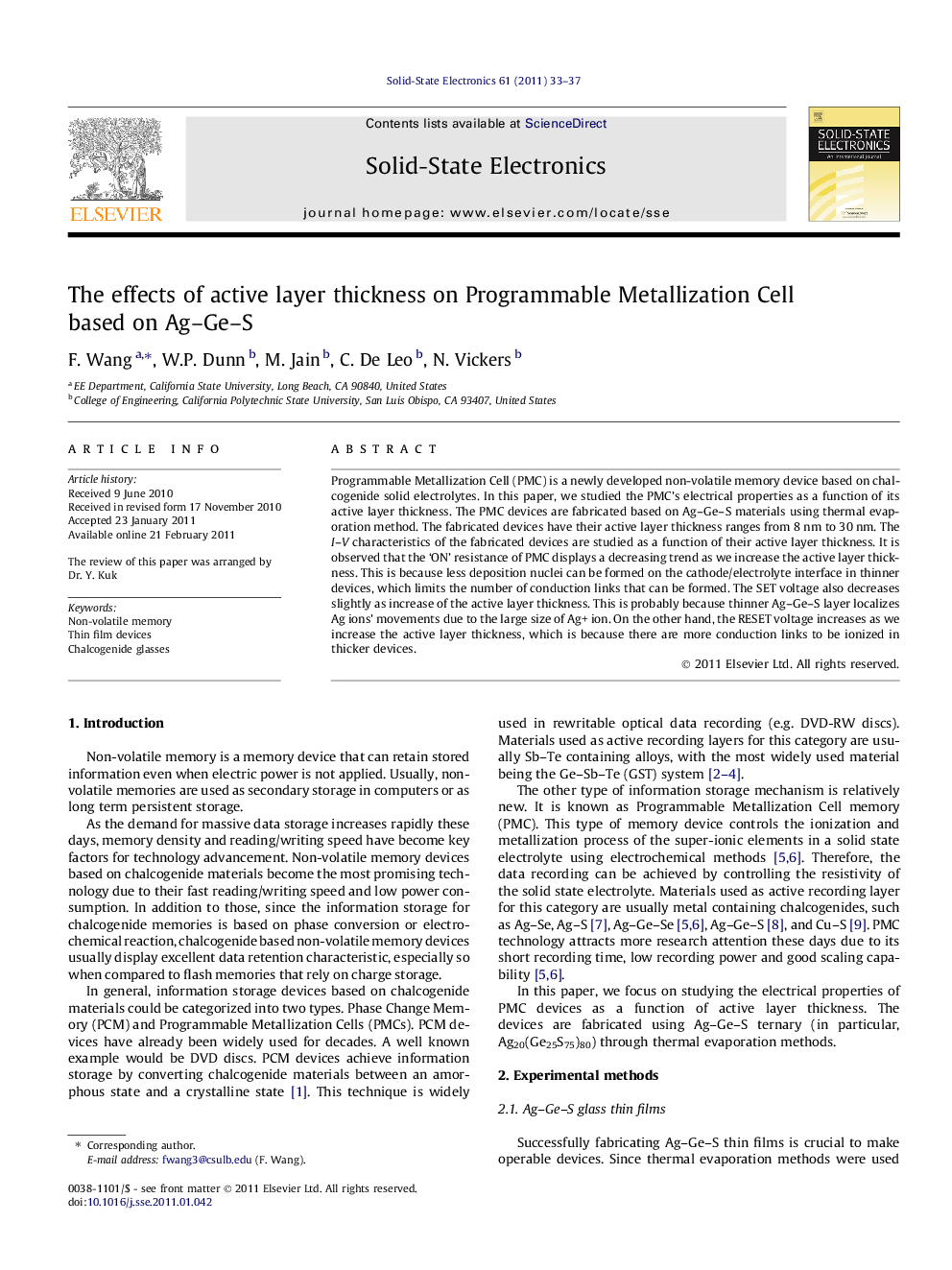| Article ID | Journal | Published Year | Pages | File Type |
|---|---|---|---|---|
| 747025 | Solid-State Electronics | 2011 | 5 Pages |
Programmable Metallization Cell (PMC) is a newly developed non-volatile memory device based on chalcogenide solid electrolytes. In this paper, we studied the PMC’s electrical properties as a function of its active layer thickness. The PMC devices are fabricated based on Ag–Ge–S materials using thermal evaporation method. The fabricated devices have their active layer thickness ranges from 8 nm to 30 nm. The I–V characteristics of the fabricated devices are studied as a function of their active layer thickness. It is observed that the ‘ON’ resistance of PMC displays a decreasing trend as we increase the active layer thickness. This is because less deposition nuclei can be formed on the cathode/electrolyte interface in thinner devices, which limits the number of conduction links that can be formed. The SET voltage also decreases slightly as increase of the active layer thickness. This is probably because thinner Ag–Ge–S layer localizes Ag ions’ movements due to the large size of Ag+ ion. On the other hand, the RESET voltage increases as we increase the active layer thickness, which is because there are more conduction links to be ionized in thicker devices.
Research highlights► PMC devices based on Ag–Ge–S were fabricated with three thicknesses. ► The ‘ON’ resistance of PMC decreases as the active layer thickness increases. ► The SET voltage also decreases slightly as increase of the active layer thickness. ► The RESET voltage increases as increase of the active layer thickness.
